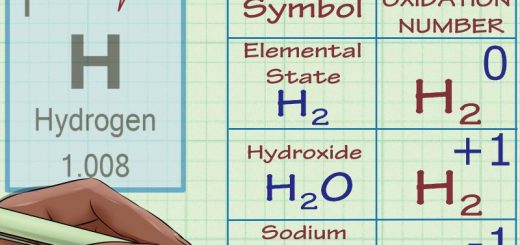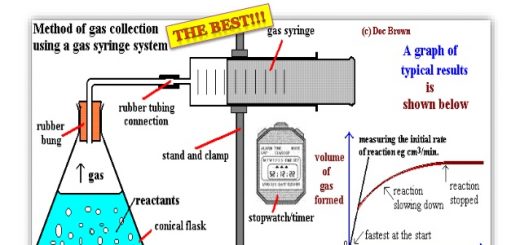Cycloalkanes, Aromatic hydrocarbons, Preparation of benzene in industry and lab
Cycloalkanes are saturated cyclic hydrocarbons that contain three or more carbon atoms may be found in the cyclic structure, The general form of cycloalkanes is (CnH2n) which is the same as the molecular formula of aliphatic alkenes, so we have to differentiate between them on writing their molecular formula.
Cycloalkanes
The nomenclature of cyclic alkanes is similar to open chain alkanes but we put the prefix cyclo in the case of cyclic alkanes, the total number of atoms = 3n, The saturated cyclic hydrocarbon which contains six carbon atoms is cyclohexane.
The angles between the bonds in cyclopropane (C3H6) equal 60° while they are 90° in cyclobutane (C4H8), These small angles lead to a weak overlap between the atomic orbitals, Therefore, the combination of carbon atoms is very weak, so they are very active.
Cyclopentane (C5H10) and cyclohexane (C6H12) are stable because the angles between the bonds near 109.5°, so the overlap between the atomic orbitals becomes more strong, therefore, strong sigma bonds are formed.
Cyclopropane forms with air an extremely burning mixture, while normal propane (linear propane) is less active, Cyclopropane is chemically active due to the small angles between the bonds in cyclopropane that leads to an overlap between the atomic orbitals, therefore, the combination between carbon atoms is very weak, so they are very active.
Unsaturated cyclic chain hydrocarbons (Aromatic hydrocarbons)
Ancient scientists differentiate between two kinds of organic compounds, Organic compounds derived from fatty acids which contain a high ratio of hydrogen and carbon, they are called aliphatic compounds (fatty acid), and methane is considered the first member of these compounds.
The other organic compounds which are produced from resins and natural products, They have a characteristic odour and called aromatic compounds (Aroma=odour), They contain a smaller number of hydrogen atoms, Aromatic benzene is the first member of these compounds, The aromatic compounds may contain one, two or more benzene rings beside their various derivatives.
Aromatic hydrocarbons which contain one benzene ring such as benzene, Aromatic hydrocarbons which consist of more than one ring such as Naphthalene (C10H8) and Anthracene (C14H10).
Benzene (C6H6)
Aromatic benzene differs from benzene used in cars (gasoline), which is a mixture of aliphatic hydrocarbons (heptane and octane) and is used as fuel, Although the properties and reactions of benzene have been studied, there is no definite formula of benzene yet, which agrees with all of this properties.
Identification of the structural formula of benzene took several years, It reacts by addition and by substitution, the bond length between the carbon atoms are intermediate between the length of a single and double bond, In addition to other properties which made the scientists confused for a long time.
In 1931, Kekule suggested a new idea about the bonding between carbon atoms in the benzene molecule, He said that carbon atoms form a ring, in which single and double bonds are exchanged, so that, all bonds between carbon atoms remain similar in length, forming a hexagonal regular shape in which carbon atoms are there at every angle.
Kekule discovered the hexagonal cyclic shape in which single and double bonds are exchanged, The ring indicates that 6 electrons are delocalized at certain carbon atoms, Aryl Radical (Ar) is the radical which produced by removing one hydrogen atom from the aromatic compound (its symbol is Ar), When we remove a hydrogen atom from benzene, the produced radical is called phenyl radical (C6H5–).
Preparation of benzene in industry
From Coal Tar : During destructive distillation of coal (heating in absence of air), it decomposes into gases and liquids, the most important of these liquids is a heavy black substance known as “Coal tar”, By fractional distillation of coal tar, we obtain a very important organic compound economically, where the most important one is benzene (80-82°C), Fractional distillation is the process which is used to prepare benzene from Coal tar.
Coal (destructive distillation, heating in absence of air) → Coal Tar( Fractional distillation, 80-82°C) → Benzene
From Aliphatic petroleum products: Due to the importance of aromatic benzene as a starting material in chemical industries, It is possible to obtain it from aliphatic petroleum derivatives by two methods which are Catalytic reforming and polymerization of ethyne.
From normal Hexane (Catalytic reformation): In this method, normal hexane is passed at high temperature on the surface of platinum (pt) as a catalyst, this method is called catalytic reforming method, Catalytic reforming is the process which is used to convert normal hydrocarbon into unsaturated cyclic hydrocarbon.
C6H12 → C6H6 + 4H2
From polymerization of ethyne (Acetylene): By passing ethyne vapour in a red hot nickel tube, Aromatic benzene is the compound produced from the polymerization of ethyne by passing ethyne vapour in a red hot nickel tube.
3C2H2 (red hot nickel tube)→ C6H6
From Phenol: By passing phenol vapours on the surface of hot zinc powder which reduces phenol to benzene.
C6H6O + Zn → C6H6 + ZnO
Preparation of benzene in lab
Pure benzene can be prepared in lab, by dry distillation of sodium benzoate with soda lime ( as in case the preparation of methane in lab).
C6H5COONa + NaOH → Na2CO3 + C6H6
Alkynes (Acetylenes) nomenclature, uses and chemical properties
General properties of Benzene, How the detergents remove spots and dirties



